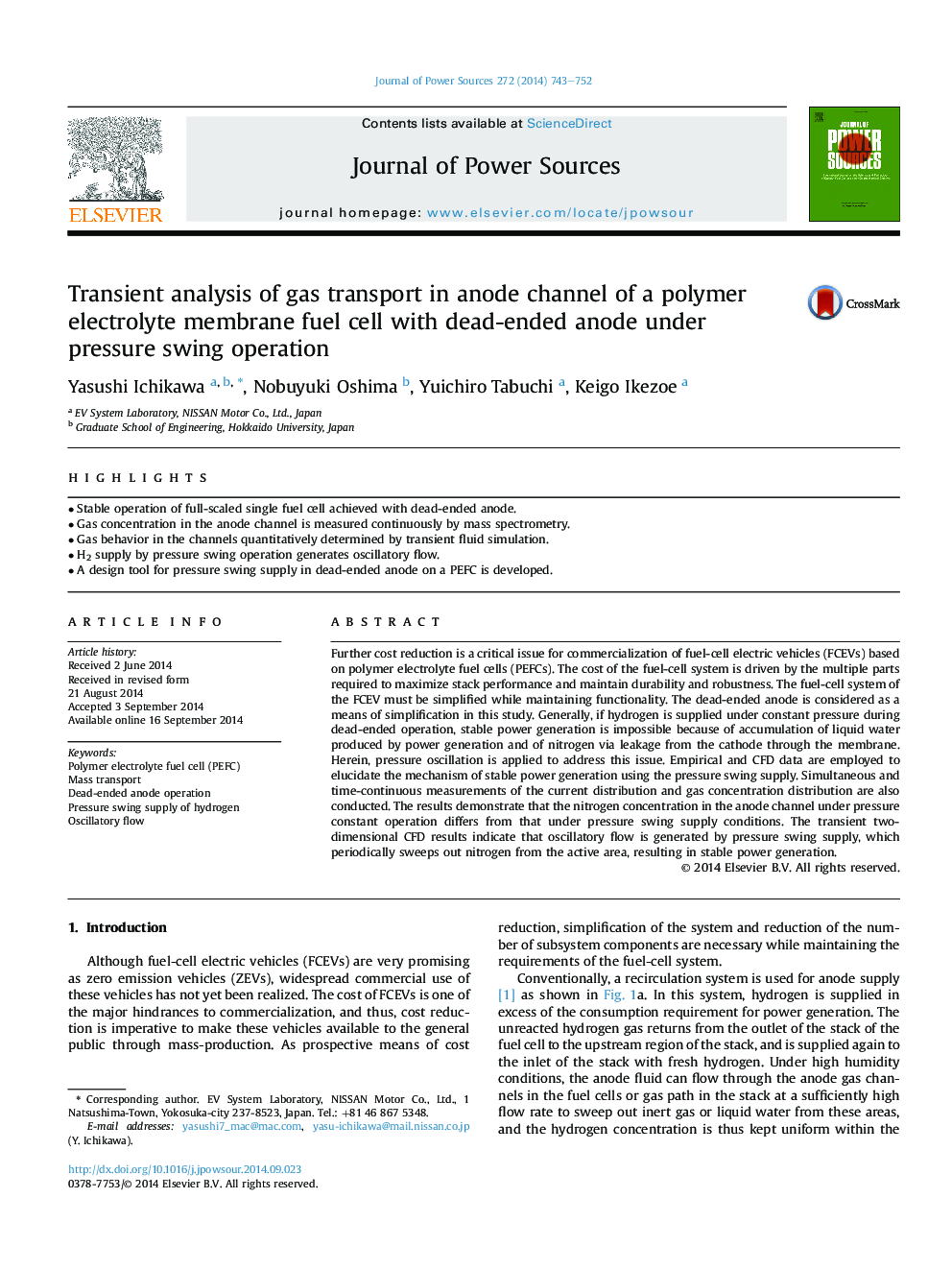| Article ID | Journal | Published Year | Pages | File Type |
|---|---|---|---|---|
| 1283953 | Journal of Power Sources | 2014 | 10 Pages |
•Stable operation of full-scaled single fuel cell achieved with dead-ended anode.•Gas concentration in the anode channel is measured continuously by mass spectrometry.•Gas behavior in the channels quantitatively determined by transient fluid simulation.•H2 supply by pressure swing operation generates oscillatory flow.•A design tool for pressure swing supply in dead-ended anode on a PEFC is developed.
Further cost reduction is a critical issue for commercialization of fuel-cell electric vehicles (FCEVs) based on polymer electrolyte fuel cells (PEFCs). The cost of the fuel-cell system is driven by the multiple parts required to maximize stack performance and maintain durability and robustness. The fuel-cell system of the FCEV must be simplified while maintaining functionality. The dead-ended anode is considered as a means of simplification in this study. Generally, if hydrogen is supplied under constant pressure during dead-ended operation, stable power generation is impossible because of accumulation of liquid water produced by power generation and of nitrogen via leakage from the cathode through the membrane. Herein, pressure oscillation is applied to address this issue. Empirical and CFD data are employed to elucidate the mechanism of stable power generation using the pressure swing supply. Simultaneous and time-continuous measurements of the current distribution and gas concentration distribution are also conducted. The results demonstrate that the nitrogen concentration in the anode channel under pressure constant operation differs from that under pressure swing supply conditions. The transient two-dimensional CFD results indicate that oscillatory flow is generated by pressure swing supply, which periodically sweeps out nitrogen from the active area, resulting in stable power generation.
